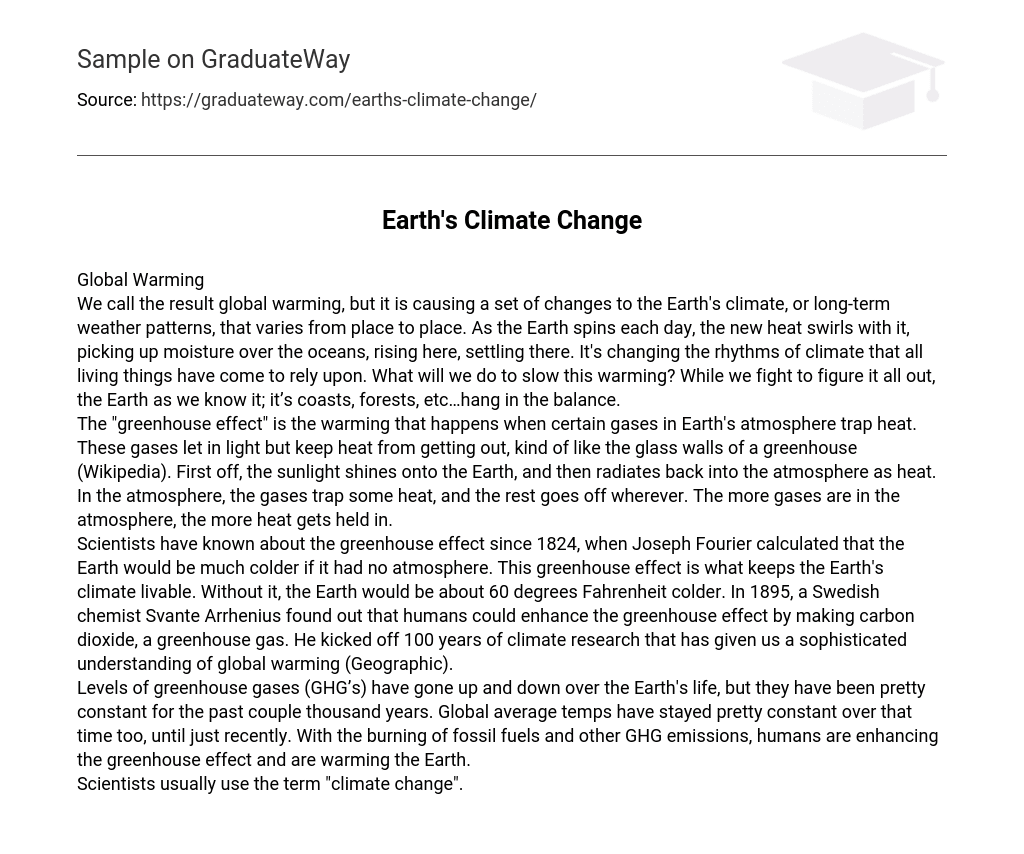Global Warming We call the result global warming, but it is causing a set of changes to the Earth’s climate, or long-term weather patterns, that varies from place to place. As the Earth spins each day, the new heat swirls with it, picking up moisture over the oceans, rising here, settling there.
It’s changing the rhythms of climate that all living things have come to rely upon. What will we do to slow this warming? While we fight to figure it all out, the Earth as we know it; it’s coasts, forests, etc…hang in the balance. The “greenhouse effect” is the warming that happens when certain gases in Earth’s atmosphere trap heat. These gases let in light but keep heat from getting out, kind of like the glass walls of a greenhouse (Wikipedia). First off, the sunlight shines onto the Earth, and then radiates back into the atmosphere as heat.
In the atmosphere, the gases trap some heat, and the rest goes off wherever. The more gases are in the atmosphere, the more heat gets held in. Scientists have known about the greenhouse effect since 1824, when Joseph Fourier calculated that the Earth would be much colder if it had no atmosphere. This greenhouse effect is what keeps the Earth’s climate livable.
Without it, the Earth would be about 60 degrees Fahrenheit colder. In 1895, a Swedish chemist Svante Arrhenius found out that humans could enhance the greenhouse effect by making carbon dioxide, a greenhouse gas. He kicked off 100 years of climate research that has given us a sophisticated understanding of global warming (Geographic). Levels of greenhouse gases (GHG’s) have gone up and down over the Earth’s life, but they have been pretty constant for the past couple thousand years. Global average temps have stayed pretty constant over that time too, until just recently. With the burning of fossil fuels and other GHG emissions, humans are enhancing the greenhouse effect and are warming the Earth.
Scientists usually use the term “climate change”.





